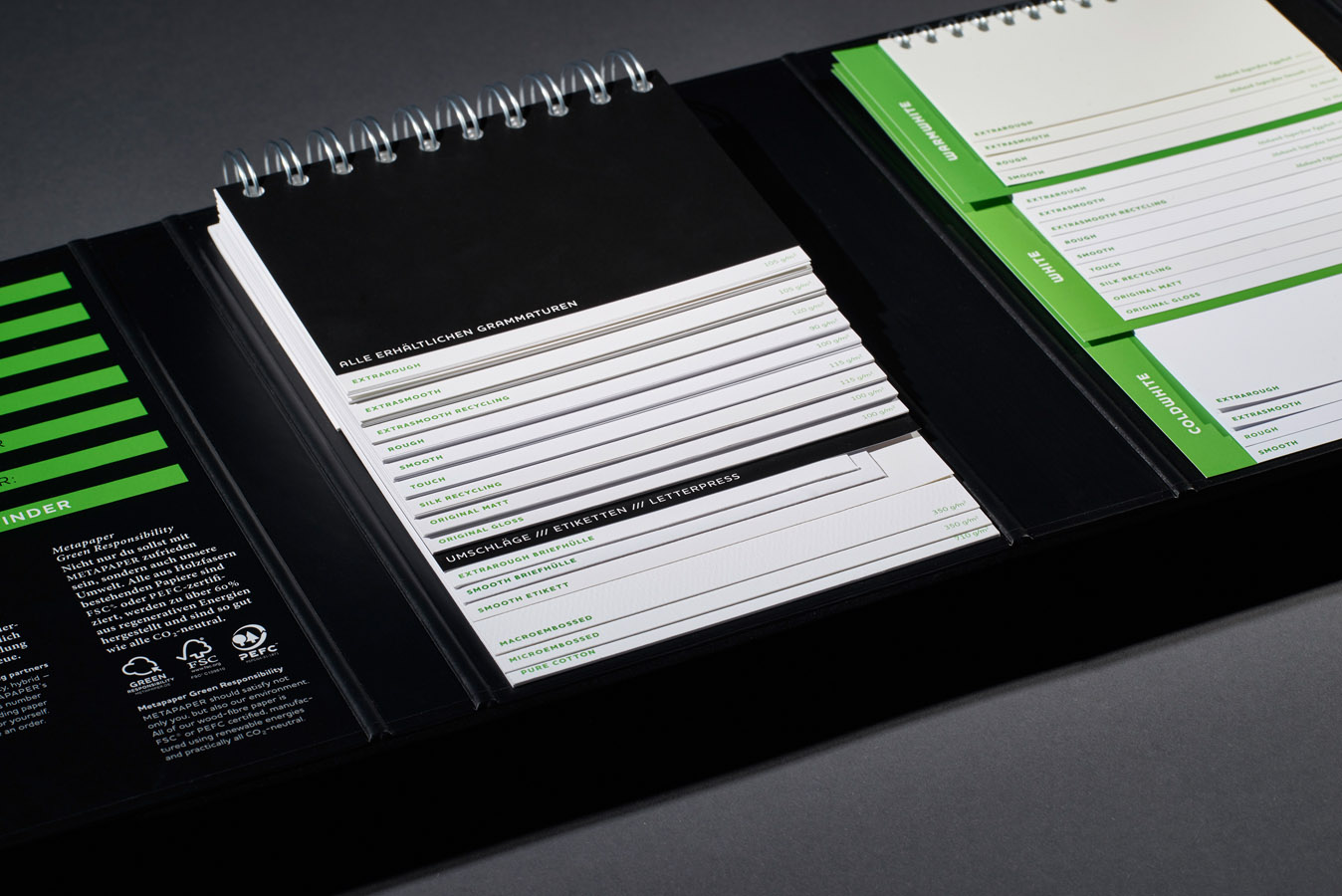
Different types of paper are categorized according to their use:
Papers for newspaper printing, for magazines (light-weight coated LWC), corporate communications and stationery (commercial printing) as well as for packaging purposes. The packaging segment includes protective covers for the distribution of goods, for example for Amazon, as well as high-quality product packaging, for example for perfumes or fashion items. Metapaper offers all the papers you need for your corporate communications, for your stationery and for your product packaging needs.
Coated papers are classified into standard coated papers (illustration printing) and art papers (art printing). One or two coats of opaque white with a chalk and/or kaolin content are applied for a smooth finish in order to achieve a more brilliant print result. EXTRAMATT (TOUCH) is an example of art paper, i.e. the coating contains raw materials that are slightly superior to the raw materials used in standard coated papers. Additionally, our art papers are produced with smaller paper machines based on a very sophisticated technology.
Uncoated papers are also known as natural papers. They are categorized as SMOOTH and ROUGH uncoated papers. The latter are either not calendered or only slightly calendered. Uncoated pigment papers are also part of the portfolio. They owe their name to the thin layer of pigment that is applied to their surface. Because this layer is so fine the papers are highly printable and preserve their appealing finish and feel. By the way: Natural papers are by no means more natural than coated papers – they just FEEL more natural. Therefore, from an ecological point of view, the term ‘natural papers’ is misleading.
In ascending order, uncoated papers are available in the quality categories standard offset, premium offset and superfine papers. SMOOTH and ROUGH are our premium offset papers. EXTRAROUGH, EXTRASMOOTH, EXTRAROUGH RECYCLING and EXTRASMOOTH RECYCLING are superfine papers. The unique finishing technology i-tone applied by paper manufacturer Mohawk plays a major role in this context. Metapaper offers all uncoated papers in three shades of White, with matching envelopes and labels.
The NATURAL, ROUGH DELUXE and ROUGH AIR fine papers are available for special applications. NATURAL is a paper made from a vintage recipe from the 1920s and has a rather uneven appearance. In contrast to the 1920s, NATURAL has been prepared for current printing techniques such as indigo and toner digital printing and, like most of the papers in the range, is hybrid. ROUGH DELUXE is used for digital finishing options such as Scodix and MGI. Paper diversity is also a result of printing technology diversity. Therefore, there are also special requirements for the inkjet process, for which ROUGH AIR is optimal.
Superfine papers are normally made of wood fibres. PURE COTTON is different and made of 100% cotton. Cotton paper is very soft and therefore highly suitable for embossing and letterpress printing. Since PURE COTTON is not made of wood fibres, it is not FSC-certified, since this certificate is granted for a sustainable approach to forestry. This organization has not yet included cotton plantations in their certification scheme.
Coated and uncoated papers or cardboard are also suitable for product packaging. In comparison to papers for corporate communication purposes, it is even more important for packaging purposes to avoid folds and to ensure a high level of stiffness and suitability for further processing. Therefore, the structure of papers used in packaging needs to be tailored for this particular purpose. With ROUGH, ecoFIBRES and COLORS Metapaper also offers uncoated cardboard used for packaging.
MULTILOFT and TOP are lining techniques to produce thick cards with or without a coloured core as well as layflat brochures. They are mainly used for small print runs utilising HP Indigo or dry-toner digital printing. MULTILOFT and TOP are perfectly suited to business cards, invitation cards or for producing a unique 6-pager (brochure with six pages). The advantage of the LAYFLAT-technology is that every page is a centrefold where the imagery and typography can run across the binding margin without mismatch.